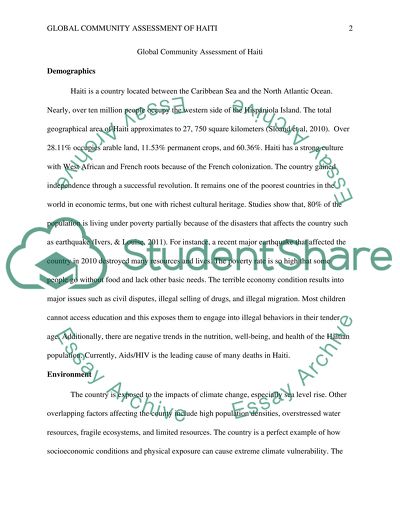Cite this document
(“Global community assessment of Haiti Research Paper”, n.d.)
Global community assessment of Haiti Research Paper. Retrieved from https://studentshare.org/environmental-studies/1484306-global-community-assessment-of-haiti
Global community assessment of Haiti Research Paper. Retrieved from https://studentshare.org/environmental-studies/1484306-global-community-assessment-of-haiti
(Global Community Assessment of Haiti Research Paper)
Global Community Assessment of Haiti Research Paper. https://studentshare.org/environmental-studies/1484306-global-community-assessment-of-haiti.
Global Community Assessment of Haiti Research Paper. https://studentshare.org/environmental-studies/1484306-global-community-assessment-of-haiti.
“Global Community Assessment of Haiti Research Paper”, n.d. https://studentshare.org/environmental-studies/1484306-global-community-assessment-of-haiti.


